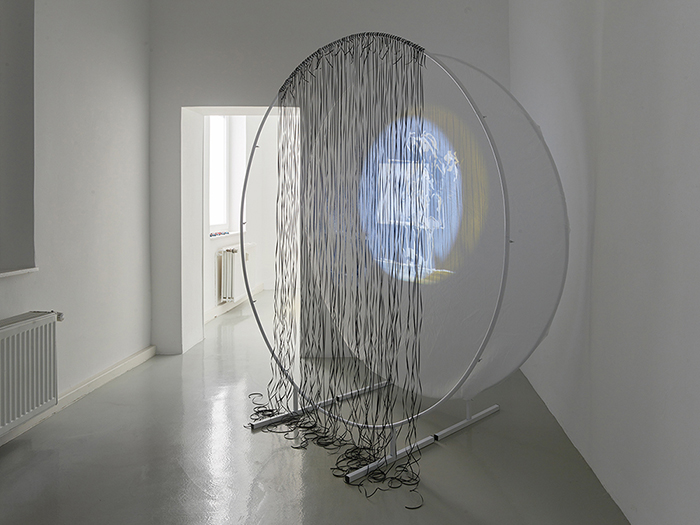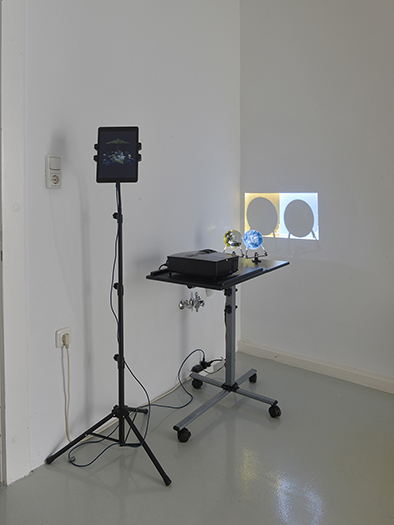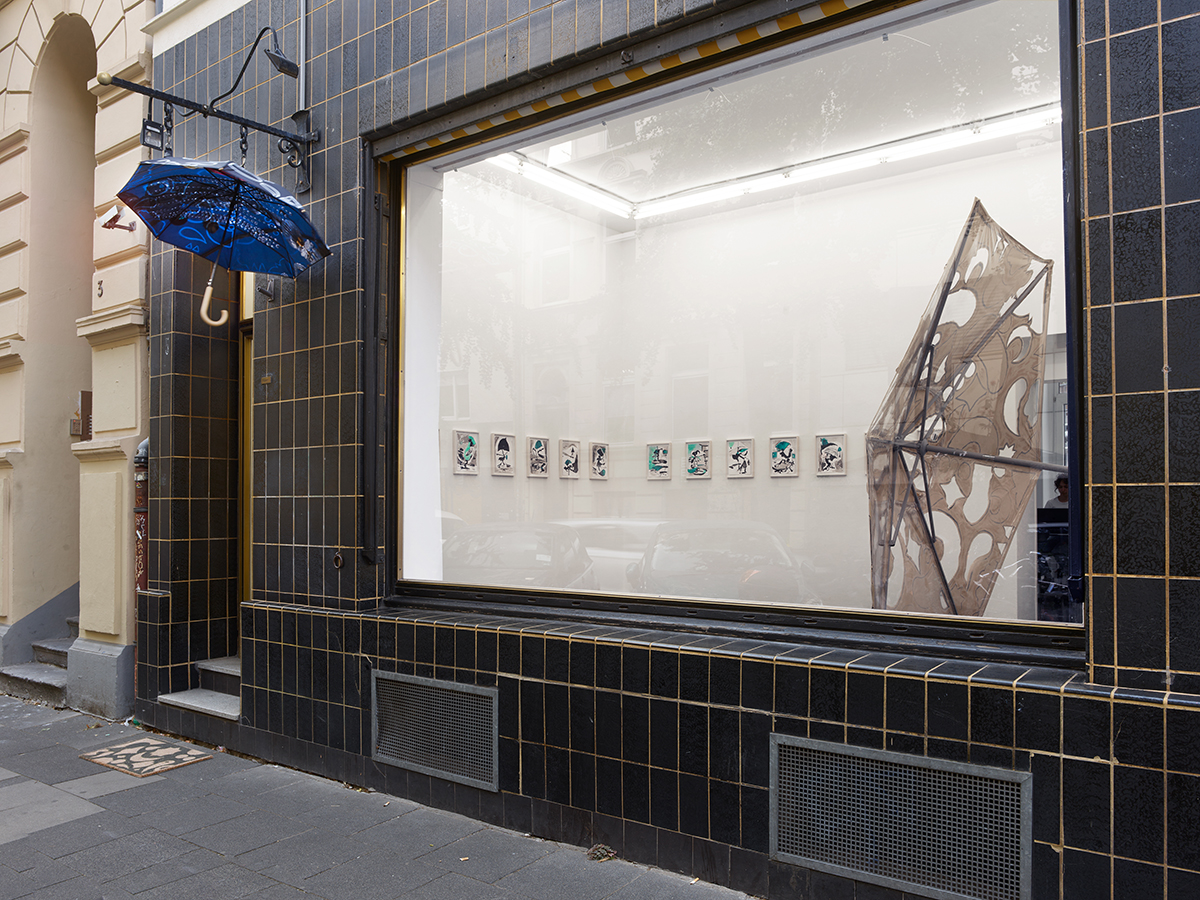
Daniella Sanander
Literal Umbrella
A performative flourish:
Lined with bold patterns and images of glitzy crystal chandeliers, the umbrellas of Oliver Husain’s new exhibition punctuate the spaces they occupy—each with a flatness that unfolds to slice wide curves through the air. While many meet the familiar scale of a human body, one swells outwards in size, engulfing the full volume of the gallery’s first room like a theatrical setpiece. It’s covered with decorative transparent shapes, which allow the giant umbrella to dance playfully between its relationships to foreground and background.
Across Clages, through experiments with found film footage, digital animation, ink drawing, and sculptural objects, the umbrella’s unusual choreography continues. A frilly parasol provides a counterbalance to an animated dancer’s graceful, almost syrupy gestures, their movements projected against a circular screen shimmering with black ribbon. Umbrellas twirl, ooze, and become fractal in a series of ink works by the artist, hand-drawn translations of AI-generated images that were responses to the prompt dancing umbrella. In each of these works, the exhibition’s titular prop seems to absorb a vortex of contradictory forces: flatness and depth, gesture and stillness, folding and unfolding and folding again, all with a twist of the wrist and an expansive flourish.
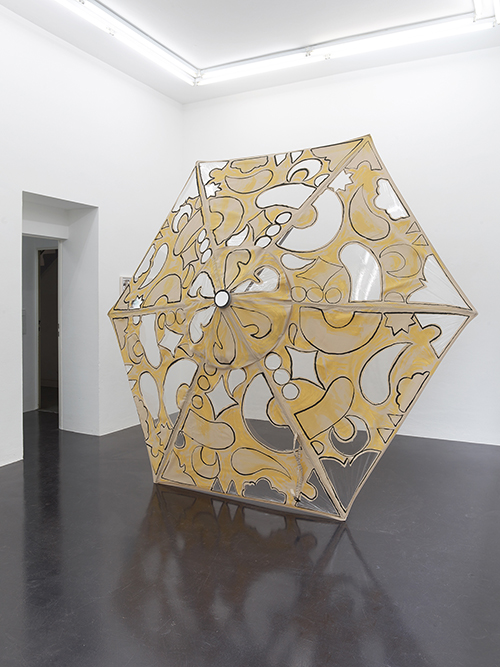
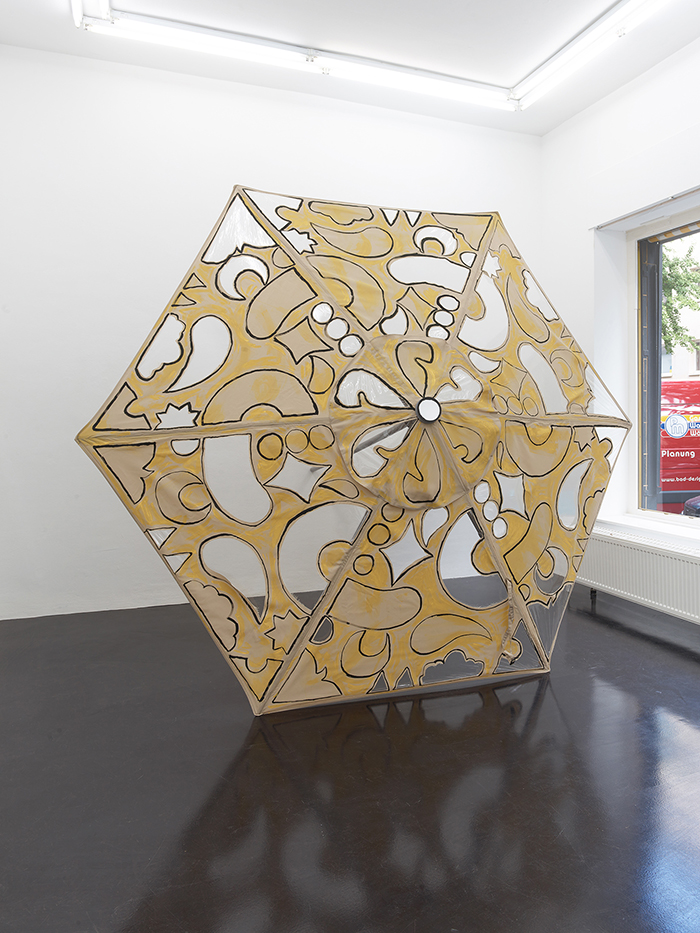
The androgynous, silent dancer in Model of a Glasses-free Lenticular 3D Cinema as Conceived by Semyon Ivanov in Moscow, 1940 ~ Based on Second-hand Information ~ (2022) is moving across Husain’s bedazzled approximation of a Soviet-designed stereoscopic screen. The subject of the artist’s research for the past few years, this parallax screen technology was developed in the USSR in the early 1940s, reportedly the first of its kind to allow for immersive 3D film viewing without the required support of glasses or other devices. Through the scant reports emerging from beyond—what would shortly become—the Iron Curtain, film journalists in the West marveled at the technical and cinematic achievement of the Soviets. Choice quotes from this research animate the subsequent video work in Husain’s exhibition, bouncing across the screen like enthusiastic taglines in 1950s-era movie trailers, accompanied by a twinkling, percussive soundtrack by musician Victoria Cheong.
However, as Husain’s narrative follows—supported through research from academic Sanja Obradovic—the utopian possibilities of the Soviet’s stereoscopic raster screen soon became entwined with Cold War-era anxieties: in the eyes of American journalists, the screen transmuted from liberatory technology to anti-diplomatic deception, from Holy Grail to treacherous Chimera. Had it ever existed in the first place? As war planes and UFOs glide through the skies in the background of Ivanov’s Invention (2022), Husain reminds viewers that cinema has always acted as an environment where audiences can process our relationships to war, imperialism, and the lingering threat of otherness.
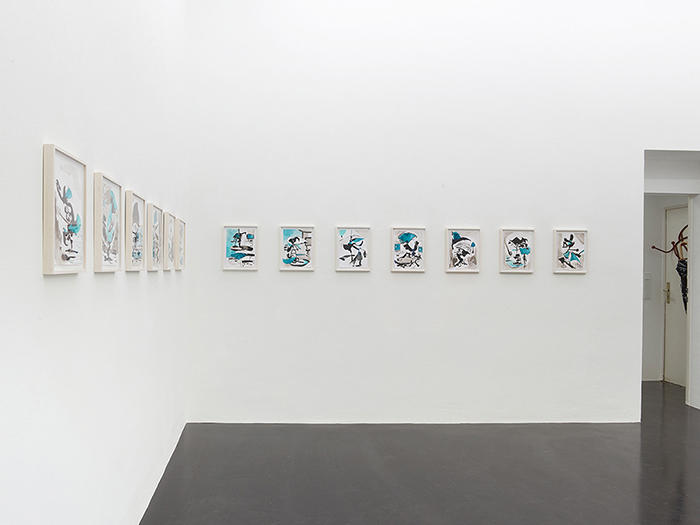
An ever-unfolding invitation:
As Husain has described elsewhere—and visualized in earlier works such as Purfled Promises (2011)—the closed curtain of a theatre is a promise, an invitation; a presumed border between real and fictive worlds. Throughout Literal Umbrella, as the titular object continues to twirl and spin, these traditional boundaries begin to dissolve. Where does a prop end and a dancer begin? How does the architecture of a theatre meet the collective body of an audience? When does the fantasy of a projected image start to absorb narratives, politics, and possible threats that exist beyond itself? While the umbrella takes centre stage, Husain’s exhibition also exposes these infrastructures of world-making that exist in filmic and theatrical contexts: the projection screen, the unfolding curtain, the set design, the TV studio—they undulate, they blur, they graze against each other, their edges disappear.
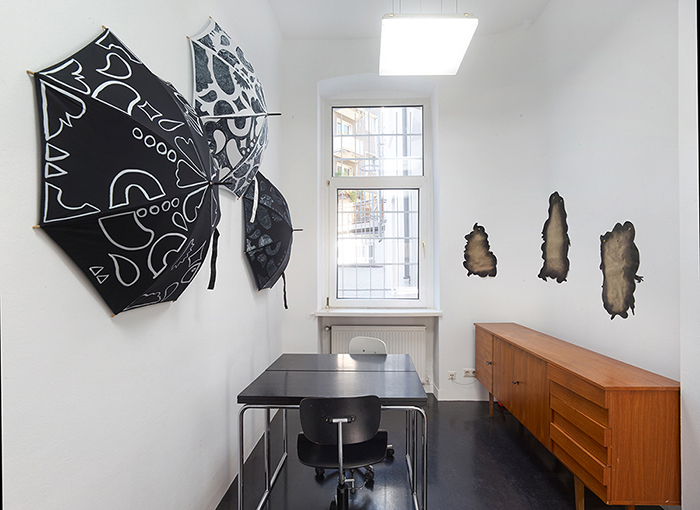
In Foily Footlights (2022)—which also features a score by Cheong—an audience in fancy dress stares in rapt attention as Husain twirls an umbrella onstage, his gesture timed with the familiar hum of film reels on a projector. As another chandelier sways above, the curtain closes and reopens to an enthusiastic standing ovation. It’s the awe and pleasure found in the unfolding promise of a screen—the imagined worlds that cinema can invite viewers to enter, to lose ourselves within. As Literal Umbrella reminds us, from immersive pleasures to geopolitical anxieties, these promises can carry more than we realize.
photos by Simon Vogel
